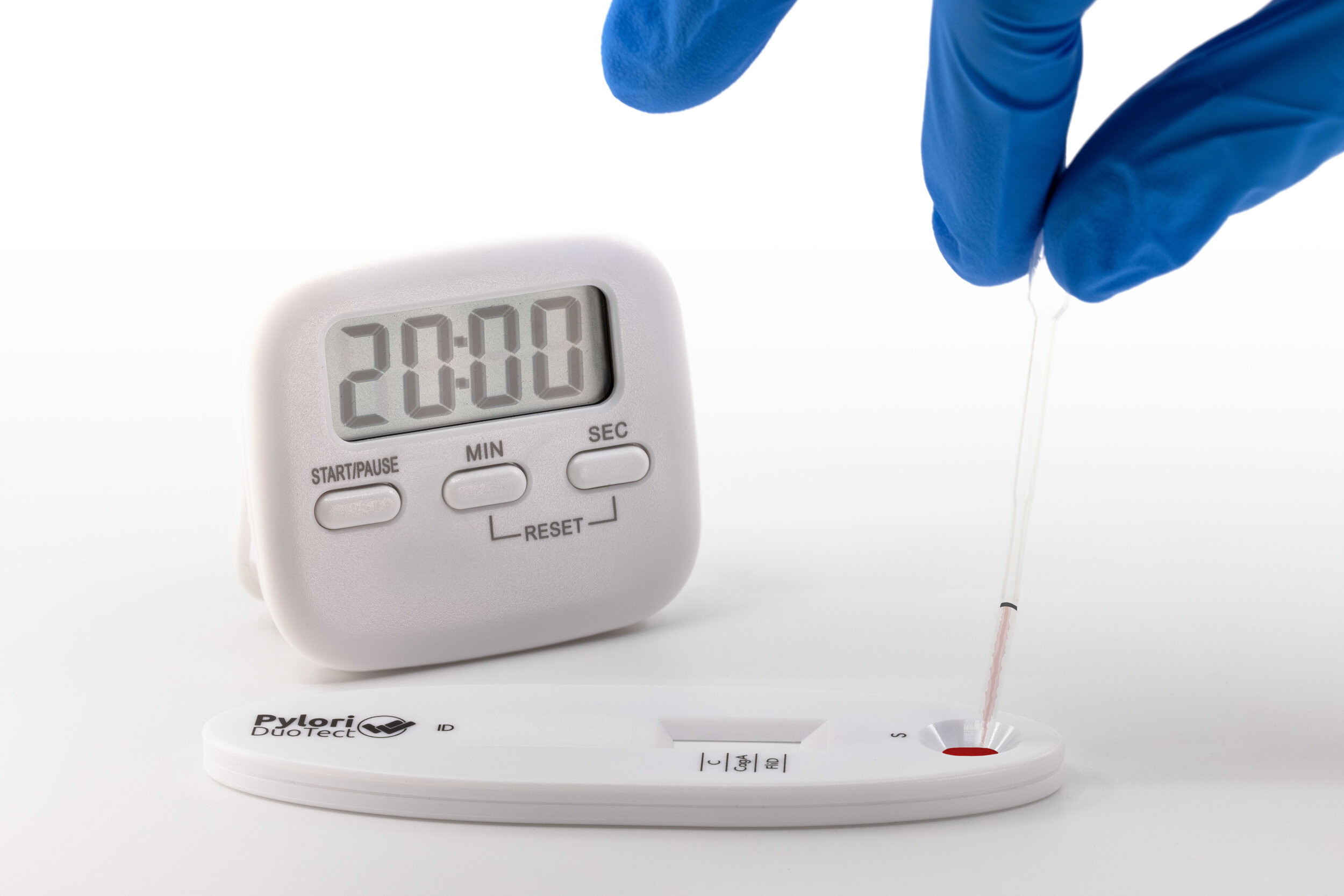
Helicobacter pylori – 50% of the world’s population is infected
The sooner it is detected,
the more treatable it is.
Helicobacter pylori is a gram-negative bacterium that colonizes the gastric mucosa in approximately 50% of the human population. It is one of the most common infectious diseases worldwide and has been classified as a type-1 carcinogen by the WHO (World Health Organization) and IARC (International Agency for Research on Cancer).
Diagnosing and treating the infection early on lowers the risk of developing serious stomach diseases such as peptic ulcers, gastric MALT lymphoma and gastric cancer, which is one of the most common causes of cancer deaths worldwide, with an estimated 1 million new cases every year (IARC Factsheet).
Studies show that around 20% to 30% of infected individuals may develop peptic ulcer disease, while the risk for gastric carcinoma increases by a factor of 2 to 35.
Therefore, when an infection with H. pylori is diagnosed, timing plays a decisive role. The sooner it is detected, the better it can be treated.
Global Prevalence
In many countries, the incidence of H. pylori infection has been decreasing in association with improved standards of living. Yet this bacterium is still ubiquitous.
Studies show that, in most developing countries, the prevalence remains high and is generally related to socioeconomic status, hygiene and access to H. pylori diagnostics. Conventional diagnostic methods often require patients to prepare for several weeks in advance such as stopping protein pump inhibitors (PPI’s) or antibiotics; there are also logistical issues and the cost can be relatively high.
Serological rapid tests (e.g. the test used for COVID-19 mass screening) could close an important diagnostic gap in the detection of H. pylori infections.
As a recent example, in Japan accurate screening for early detection in high-risk areas has led to a reduction in mortality. The mortality rate for males with gastric cancer has decreased markedly in the past few decades, due to mass screening programs.
In many countries, the incidence of H. pylori infection has been decreasing in association with improved standards of living. Yet the prevalence of this bacterium is still ubiquitous. The prevalence remains high in most developing countries and is generally related to socioeconomic status and levels of hygiene.
Over the past decade, there has been a sharp interest to use noninvasive tests in diagnosis of a H. pylori infection.
Improving lives by facilitating
H. pylori diagnostics
Although 50% of the global population is infected with
H. pylori, initial diagnosis of the bacterium still involves a relatively high level of effort, cost, logistics and patient discomfort.
We thought there had to be a faster, easier way to detect individuals infected wit H. pylori - no matter where in the world, no matter when. Quicker results would soeed up further examination or set establishment of treatment plans at an early stage to eradicate the bacteria.
Our solution, Pylori DuoTect®, is an H. pylori Rapid Diagnostic Test that is ready to be used during a first-line diagnosis. With >98% sensitivity and >91% specificity, our test matches the accuracy of diagnostic gold standards such as biopsy, urea breath test (UBT) and stool test.
All that is needed to get started are 2 drops of whole blood, 3 drops of assay buffer and 20 minutes of time!
Pylori DuoTect® in comparison with other H. pylori diagnostic methods.
Volker Wedershoven, CEO
Volker Wedershoven started his career as the assistant to the managing director in a company that specialized in developing, constructing and servicing dedicated machines for the pharmaceutical industry. In 1992, Volker was Managing Director and acquired his first shares. He established two subsidiaries in the U.S.A. and additional points of sale in Europe and Asia.
Until 2010, when the company was sold, it grew successfully from 35 to 480 employees.
After selling the company, Volker worked as a consultant and Business Angel for various projects in different industries and now serves as Chief Executive Officer (CEO) at ImevaX.



